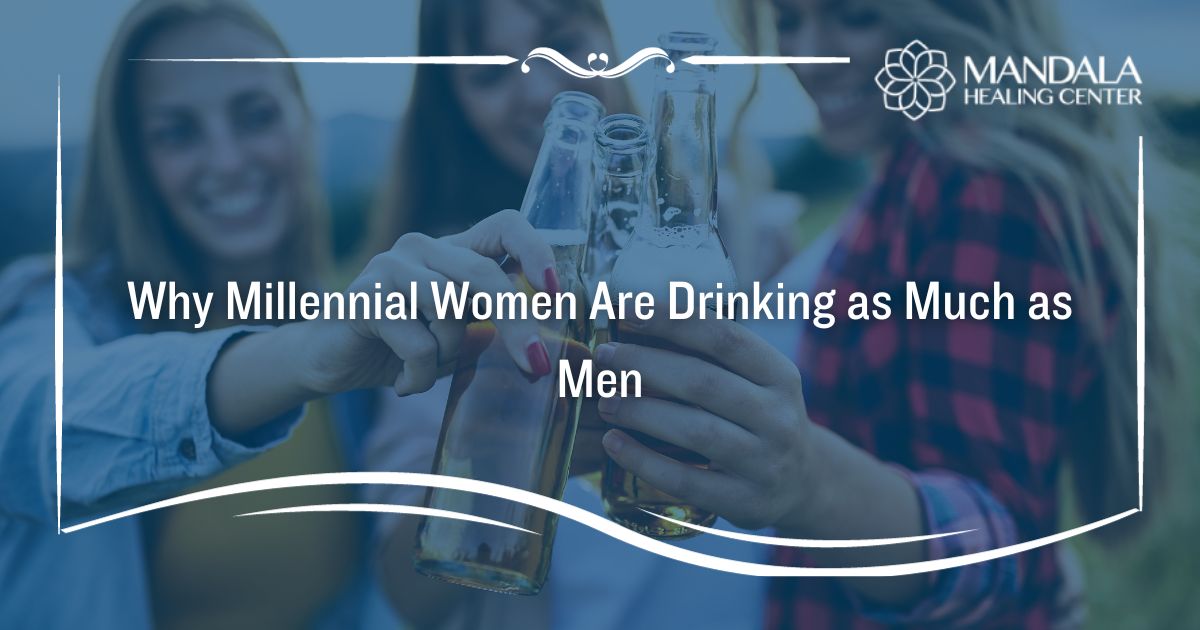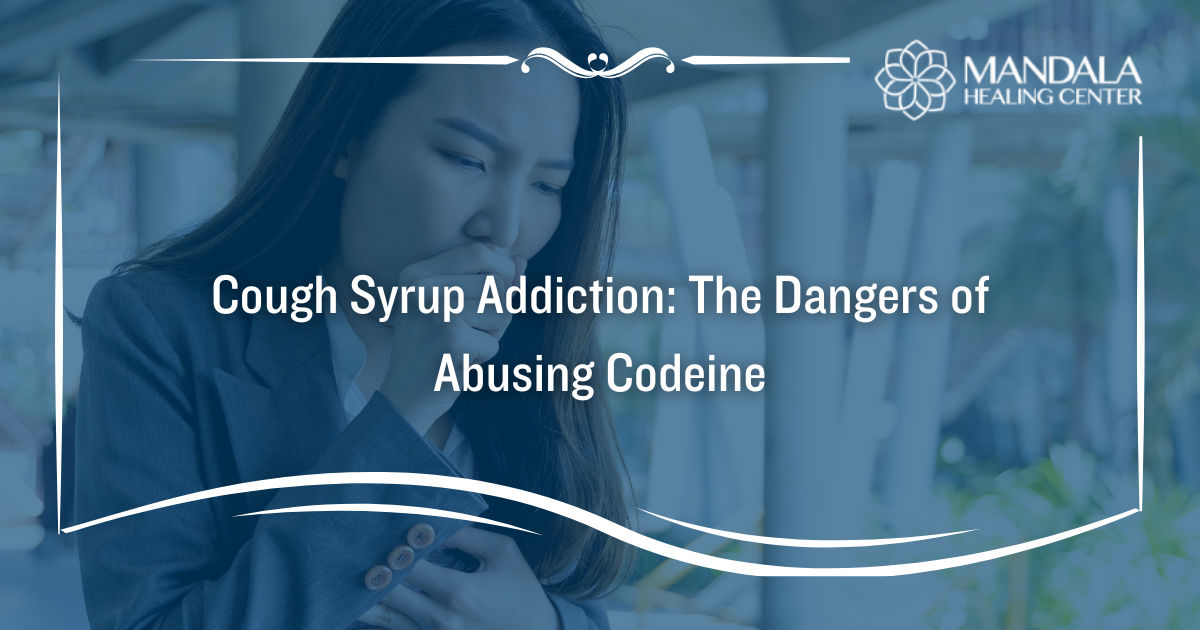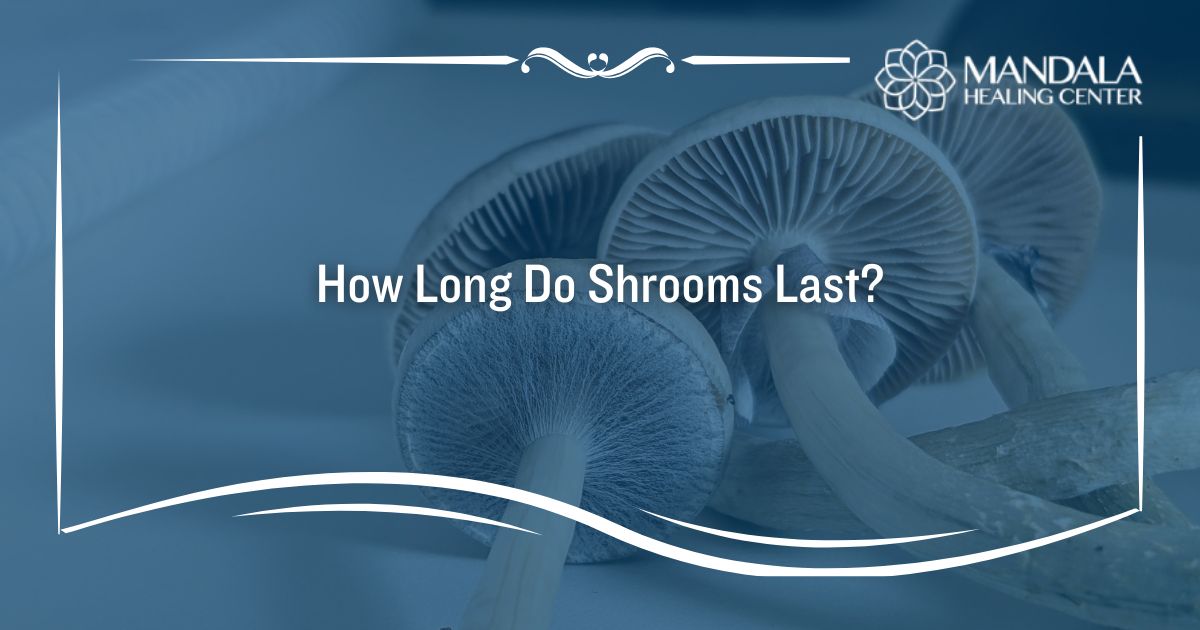When many people think about alcoholism, they may have a picture that fits certain long-held stereotypes. For many, the image that comes to mind is of a man who may be homeless, disheveled, and visibly intoxicated.
But this stereotype does not reflect reality. In recent years, millennial women’s drinking habits have changed, and this demographic is nearly as likely to drink heavily, abuse alcohol, or develop alcohol addiction as their male peers.
It is essential to examine our beliefs about who lives with alcoholism and change the way we think about identifying alcohol abuse and addiction and treating it.
This article will explore why millennial women are drinking as much as men and the consequences of this increase in alcohol consumption. If you or someone you love struggles with alcohol abuse or addiction, you are not alone. Reach out to the Mandala Healing Center Specialists for information about our holistic treatment programs.
Understanding the Alcohol Gender Gap
Over the last century, women’s alcohol consumption has steadily risen– and now the difference between men’s and women’s drinking seems to be shrinking to nothing. In fact, the most recent United States data from 2019 showed that teen girls and women in their early twenties reported drinking or becoming intoxicated at higher rates than males of the same age.
Research also suggests that women with unhealthy drinking behaviors may be affected more profoundly than their male counterparts. Research shows that women’s mental and physical health suffers at higher rates, with women developing cancer, heart disease, and liver damage at higher rates after lower levels of drinking.
Women often face challenges and barriers to getting the help they need, and their substance use disorders often go undiagnosed for longer periods. The results? More women drinking at a higher level, worsening consequences, and fewer opportunities for help.
Why Are Millennial Women Drinking More Now?
Women’s alcohol consumption mirrors the rise in mental illness among young women. The COVID-19 pandemic exacerbated existing gender issues, causing many women to leave the workforce to care for children or change how they worked.
Mental health and addiction experts are concerned about the long-term effects of the COVID-19 pandemic on women ‘s mental health. Many believe that the lingering mental health effects of the pandemic may be contributing to higher rates of alcohol abuse and addiction among young women.
Research also suggests that young women may be drinking to cope with other stressors, such as:
- Unemployment or underemployment
- Sexual harassment and assault
- Social anxiety
- Childhood trauma
- Depression
- Anxiety
- Eating disorders
Millennial women are in a unique period of transition and stress. Many are starting college, struggling to pay bills, navigating new friendships and relationships, and beginning to recognize and address trauma from the past. These and other life stressors may cause some to use alcohol to cope.
Self-Medication, Alcohol Abuse, and Addiction
When a person uses substances, including alcohol, as a way to manage stress or cope with life’s challenges, it is known as self-medication. Drinking alcohol can provide temporary relief from social anxiety, depression, boredom, and other psychological discomfort. But when people rely on alcohol or other substances in place of other healthy coping skills, they put themselves at risk of developing addiction.
So, how much alcohol is too much? The Centers for Disease Control and Prevention (CDC) provides guidelines for alcohol consumption that aim to minimize people’s risk for complications or long-term harm.
According to the CDC, people who consume alcohol should drink in moderation. Moderate drinking is defined as:
- One or fewer alcoholic drinks per day for women
- Two or fewer alcoholic beverages per day for men
It is also essential to keep in mind that a “drink” does not mean any standard drink served in a bar or restaurant. A “drink” is defined as:
- 5 ounces of wine
- 12 ounces of beer
- 1.5 ounces of distilled spirits
- 8 ounces of malt liquor
A large glass of wine served in a bar may contain two or more servings of alcohol, and some mixed drinks contain multiple servings as well.
Women process alcohol differently than men because of body size, composition, hormones, and other metabolic differences. When a woman consumes a drink, her body will metabolize it differently, allowing higher concentrations of alcohol in the blood and more alcohol exposure and tissues throughout the body. This can result in women facing more long-term harm from heavy drinking, such as liver damage and cancer, than their male counterparts– even if they drink the same amount of alcohol.
Find Help Now
If you or someone in your life is struggling with alcohol abuse or addiction, you are not alone. Comprehensive treatment can help you overcome the physical, behavioral, and emotional aspects of substance abuse and give you the skills to stay sober for the rest of your life.
Reach out to the Mandala Healing Center specialists now to learn how our holistic approach to alcohol addiction treatment can help you work toward a healthier, sober future.
References:
1. Centers for Disease Control and Prevention (CDC): Excessive Alcohol Use is a Risk to Women’s Health, Retrieved October 2023 from https://www.cdc.gov/alcohol/fact-sheets/womens-health.htm
2. National Institute on Alcohol Abuse and Alcoholism: Gender Differences in the Epidemiology of Alcohol Use and Related Harms in the United States, Retrieved October 2023 from https://arcr.niaaa.nih.gov/volume/40/2/gender-differences-epidemiology-alcohol-use-and-related-harms-united-states
3. Centers for Disease Control and Prevention (CDC): Dietary Guidelines for Alcohol, Retrieved October 2023 from https://www.cdc.gov/alcohol/fact-sheets/moderate-drinking.htm












